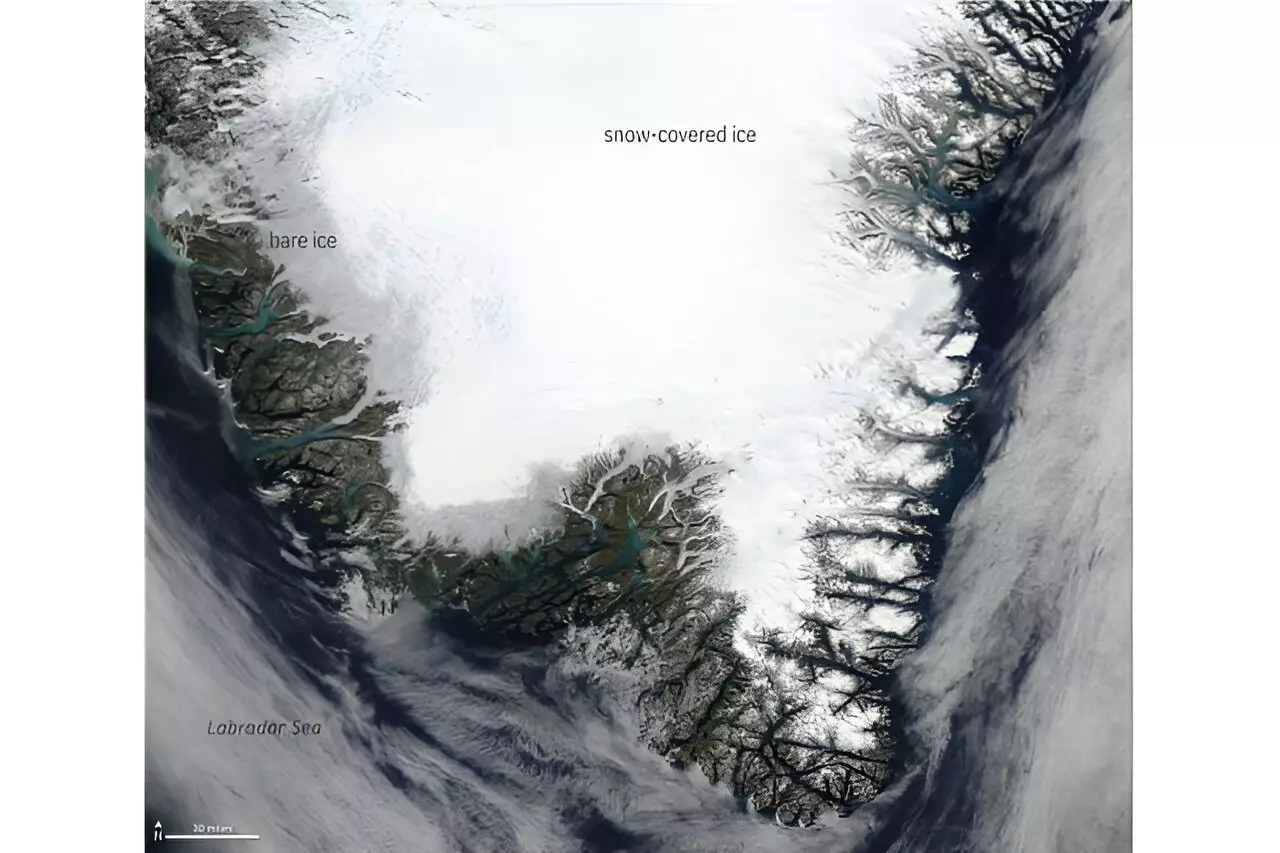In a recent study published in the Journal of Geophysical Research: Atmospheres, researchers from the UC Irvine Department of Earth System Science and the University of Michigan Department of Climate and Space Sciences and Engineering have discovered a significant flaw in a commonly used climate model. The model, known as the Energy Exascale Earth System Model (E3SM), has been found to overestimate a key physical property of Earth’s climate system – albedo. Albedo is the measure of how much sunlight is reflected by the Earth’s surface, particularly ice and snow, back into space. Inaccurate albedo values can lead to incorrect estimations of how much the planet will warm in the future.
One of the reasons for the overestimation of albedo in the E3SM model is the lack of consideration for microphysical properties of ice in a warming world. Microphysical properties, such as the presence of dark-colored algae and dust on snow and ice, can significantly impact albedo. These particles reduce the reflectivity of snow and ice, causing them to absorb more sunlight and melt at a faster rate. By not accounting for these properties, the E3SM model has been found to inaccurately predict the reflectivity of the Greenland Ice Sheet.
The findings of this study highlight the importance of accurate climate models in understanding the impacts of climate change. With the incorporation of more realistic albedo values based on satellite observations, the new ice reflectivity data has shown that the Greenland Ice Sheet is melting at a much faster rate than previously estimated. This discrepancy in melt rates has significant implications for future climate projections and underscores the need for improved modeling techniques.
Moving forward, researchers plan to expand their study to other icy regions of the planet to assess the global applicability of the albedo discrepancy found in the E3SM model. By comparing the new ice albedo values to observed melt rates in areas like the Andes and Alaska, scientists hope to refine climate models to better capture the complex interactions between snow, ice, and climate feedbacks. This research not only sheds light on the importance of microphysical properties in albedo estimations but also underscores the need for continued advancements in climate modeling to enhance our understanding of Earth’s climate system.
Accurate climate models are essential for predicting future climate scenarios and understanding the complex interactions within Earth’s climate system. The discovery of overestimated albedo in the E3SM model serves as a reminder of the importance of considering all relevant factors, including microphysical properties, in climate modeling. By refining these models and incorporating more realistic data, researchers can improve the accuracy of climate projections and better prepare for the challenges posed by global climate change.


Leave a Reply